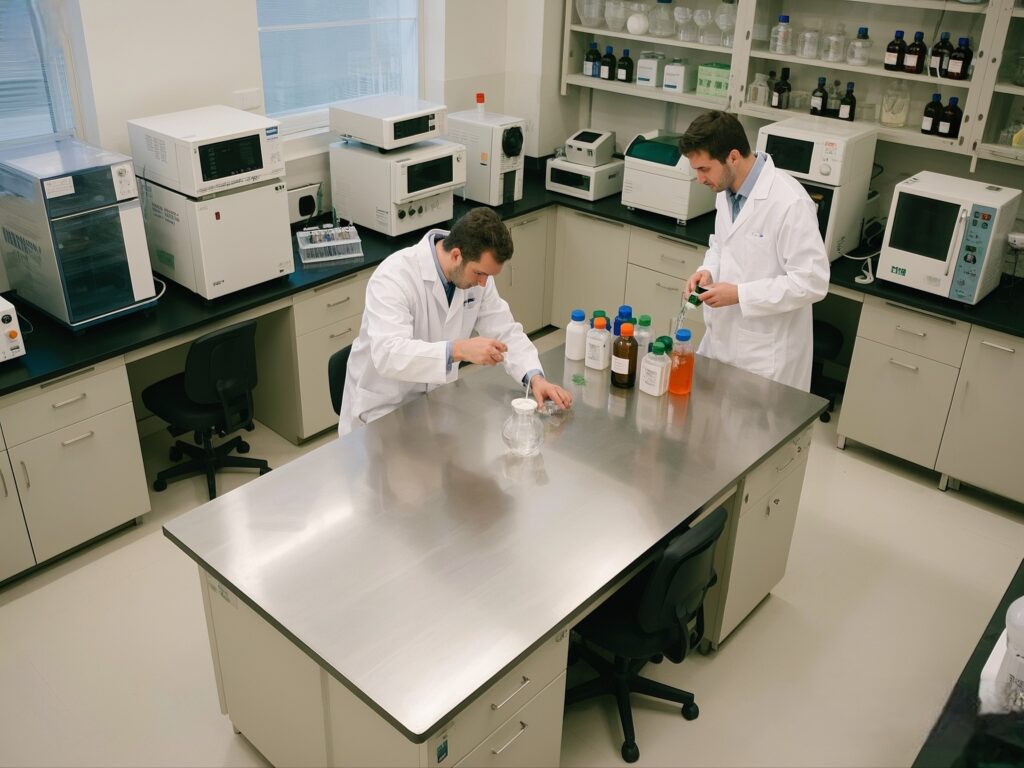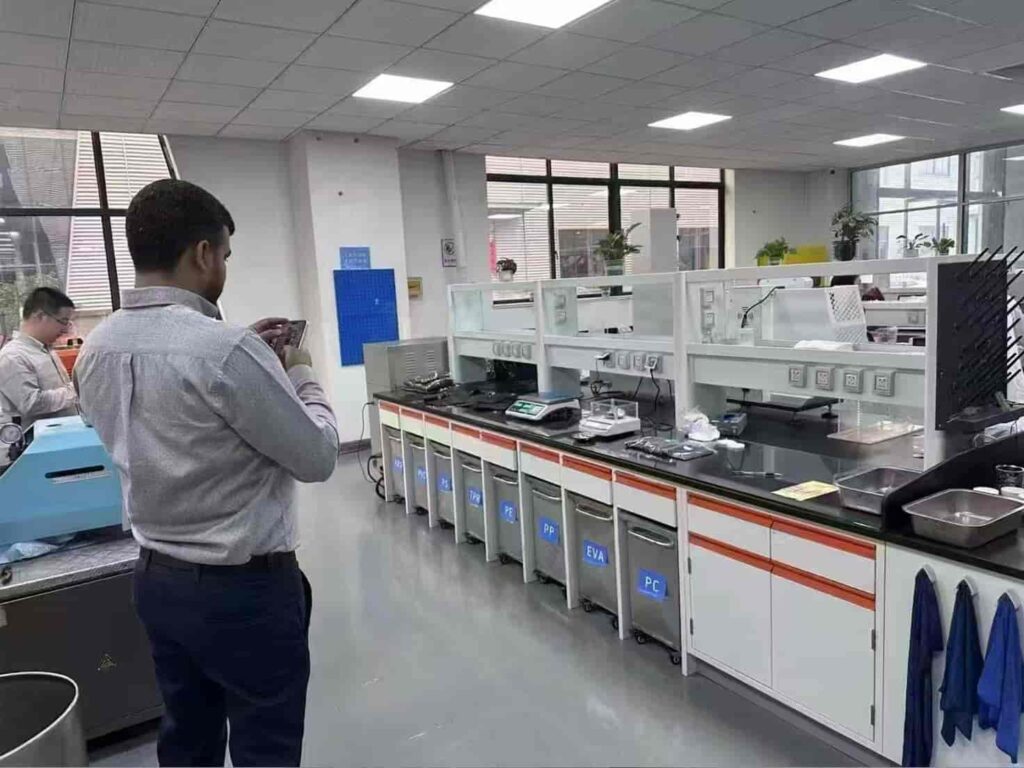Laboratory furniture is the silent partner of scientific exploration. It supports precision instruments, resists chemical corrosion, and safeguards operational safety. From cell culture to hazardous material handling, every piece of lab furniture provides a solid foundation for scientific breakthroughs.
Design First: Scientific Planning of Laboratory Furniture Layout
Precise planning is the starting point for an efficient laboratory:
- Clarify the nature and scale of the laboratory: The biosafety level determines the choice of furniture materials.
- Three-dimensional modeling of the space: Precisely calculate the height of the windowsill, the position of the columns, and the direction of the pipes.
- Revolution in flooring: Eliminate marble! Choose PVC/epoxy resin flooring (corrosion-resistant and non-slip).
- Safety corridor design: Main corridors ≥1500mm (for two-person operation zones), fume hoods positioned away from doorways.
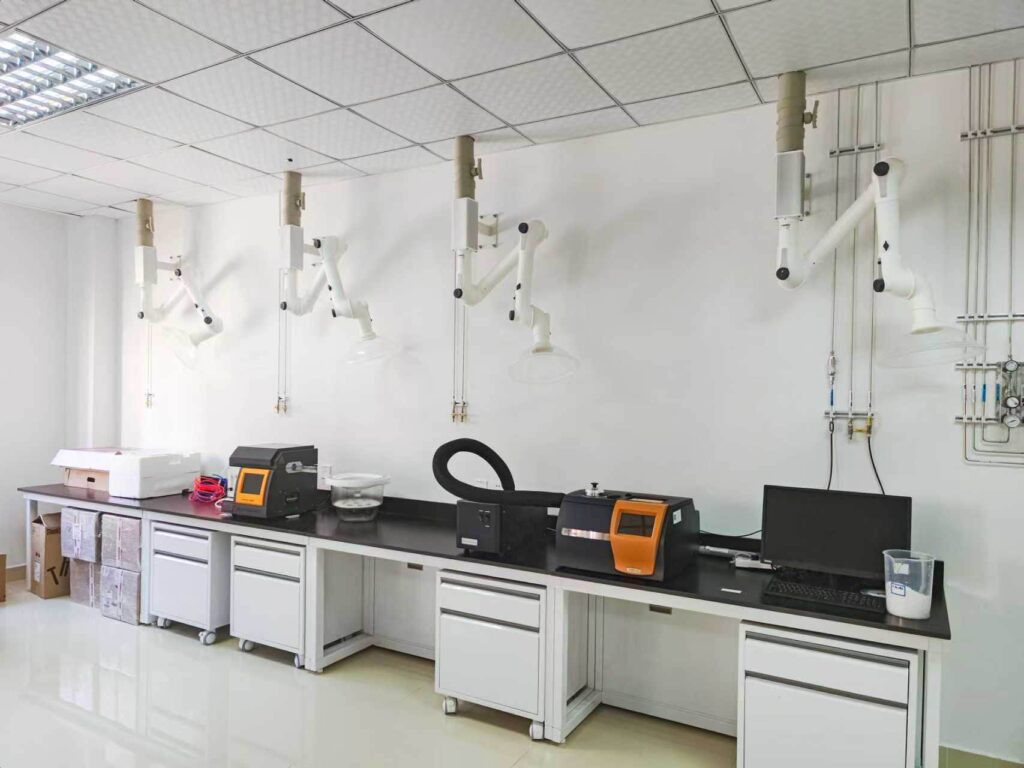
Ergonomic Revolution: The Scientific Secrets of Laboratory Workbenches
Lab workbenches are the “battlefield” for researchers:
- Seated workbench surface: 30-34 inches (750-850 mm), with an optional 35-inch (900 mm) height for males.
- Standing workbench surface: 34-36 inches (850-920 mm) – the golden height.
- Laboratory workbench length standard: 47 inches (1200 mm) per person; organic chemistry benches require 55-63 inches (1400-1600 mm).
- Reagent rack height: 30 inches (750 mm), tall cabinets reach up to 78 inches (1800 mm).
Rounded edges + adjustable round stools + casters + footrests: reduce fatigue from continuous operation by 40%.
For reference: what size is a lab workbench
Safety Barrier: The Life-Saving System of the Laboratory
Safety is at the core of laboratory design:
- Dual-channel ventilation system:
- Local exhaust ventilation: Fume hoods with a wind speed of 0.5 m/s to capture toxic gases, atomic absorption hoods, and adjustable exhaust hoods, among other local exhaust ventilation equipment.
- Whole-room ventilation: The final barrier for emergency response.
- Three-tier protection system:
- Emergency eyewash station: 6-second rapid activation.
- Explosion-Proof Reagent Cabinets: Acid-washed phosphated steel plates + mechanical locks.
- Safety door width: 35–59 inches (900–1500 mm) Double doors are optimal.

Laboratory Workbench Countertops: The “Bulletproof Armor” of Laboratories
Different Experiments Require Different “Armor”:
| Material Type | Temperature Resistance Limit | Core Advantages | Suitable Scenarios |
|---|---|---|---|
| Ceramic Plate | 1500℃ | Resistant to strong acid corrosion | High-temperature workbenches, extreme environments |
| Epoxy Resin | 800℃ | Damage can be repaired | Chemical laboratories |
| Physical and Chemical Plate | 180℃ | Economical and durable | Standard workbenches |
| Marble | 2000℃ | Zero vibration interference | Balance tables |
Edges thickened to 25.4mm: Impact resistance improved by 300%.
Dish-shaped ceramic countertop: Effectively prevents accidental rolling of items and minor liquid spills.
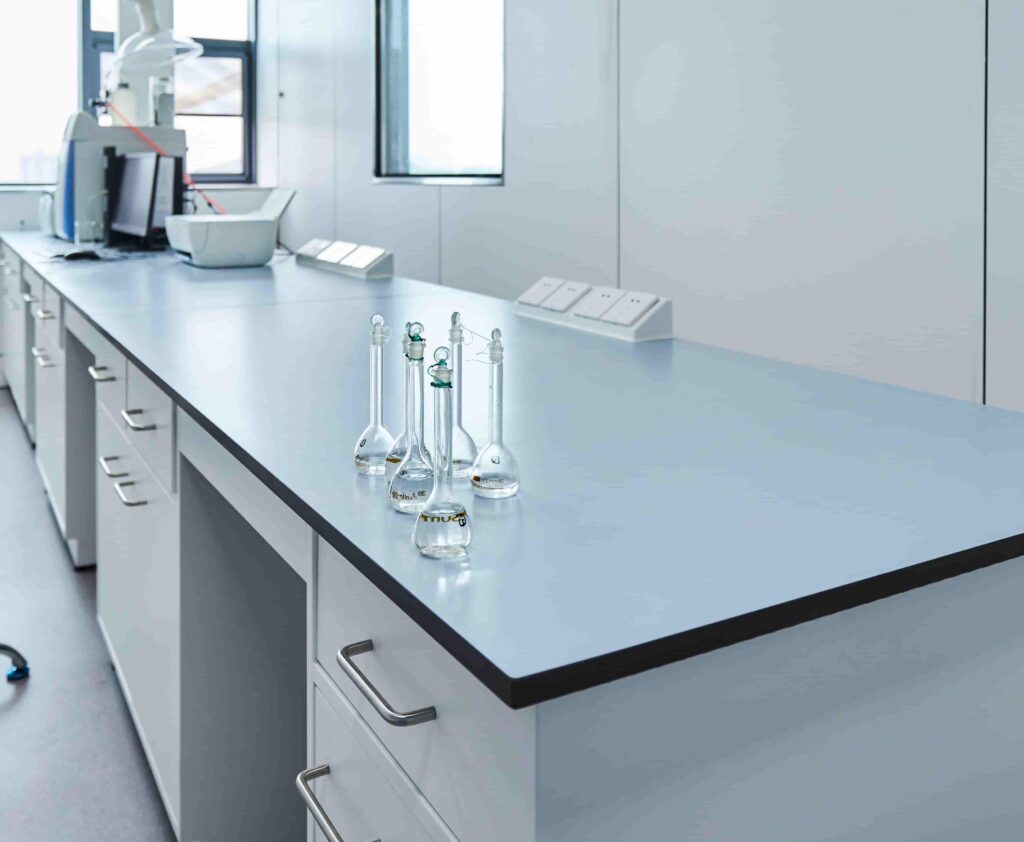
Laboratory Smart Furniture System: The “Nervous Center” of the Laboratory
Modular Design Laboratory Benches Enable Endless Possibilities:
- All-Steel Structure:
- 1.0mm or 1.2mm thick cold-rolled galvanized steel plate with a load capacity of 800kg, high stability (supports large reactors).
- Surface coated with epoxy resin to prevent chemical corrosion of the laboratory cabinet and maintain an attractive appearance.
- Space-Saving Design:
- C-shaped/L-shaped side benches: Curved walls save 30% space.
- Island-style central benches/laboratory workstations: Create a circular workflow.
- Functional Accessories:
- Foot-operated faucets: Essential for sterile operations.
- Reagent racks with lighting: Ensure proper storage of chemicals while providing optimal lighting conditions.
Specialized Equipment: Guardians of Professional Environments
Every experiment has its own dedicated guardian:
- Biological Safety Cabinet (Level 3 Protection):
- Level 1: Basic particle filtration.
- Level 2: Triple protection for samples, personnel, and the environment.
- Level 3: Fully enclosed glove box operation.
- Ultra-clean Workbench:
- Dual mode: horizontal/vertical laminar flow.
- Flexible single/double-person configurations.
- Hazardous Chemical Management Solutions:
- Corrosion-Resistant Medication Cabinets: Dedicated storage for hydrochloric acid/nitric acid.
- Explosion-Proof Cabinets: 2-hour fire resistance rating.
- Glassware Cabinets: Dedicated glassware shelves, adjustable brackets + ventilation system.
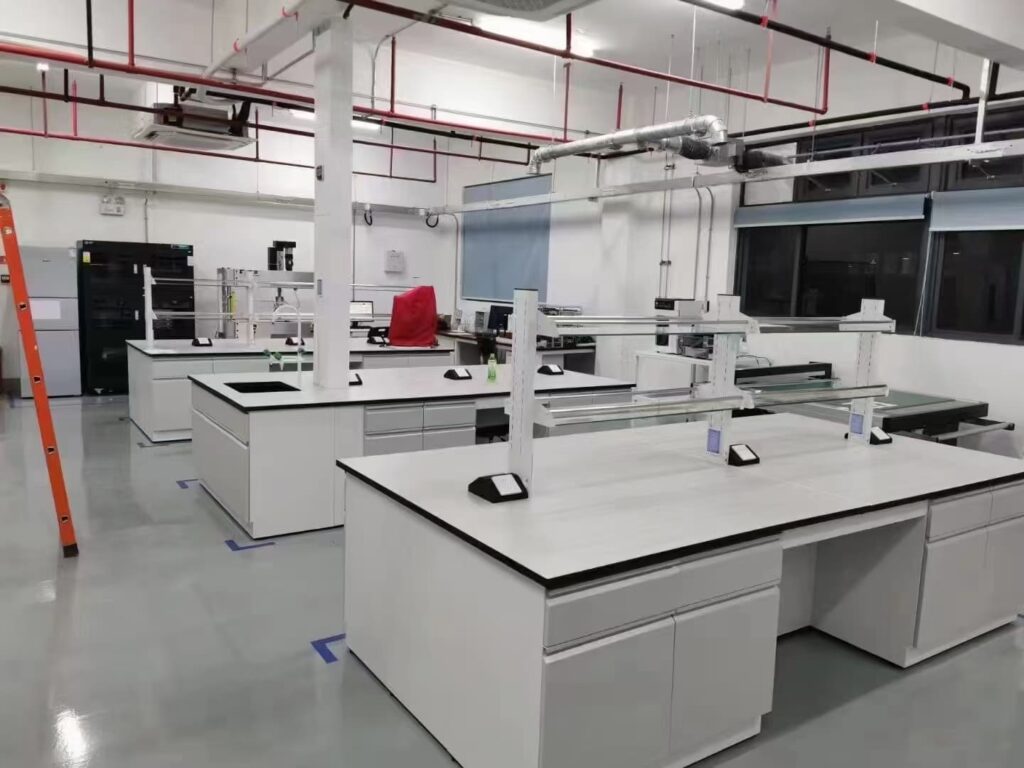
Future Lab: Intelligent and Sustainable Evolution
Technology is reshaping laboratories:
- Digital twin systems: Tabletop sensors monitor temperature and humidity in real time.
- Embedded micro reactors: 1 m² simulates a 2,000 L production environment.
- Green revolution: Steel laboratory furniture is formaldehyde-free and fireproof.
- Water-saving design: Copper gooseneck triple faucets save 15 tons of water per year.
Conclusion: People-oriented scientific space
When steel laboratory benches support precision gene editing operations.
When ceramic countertops record antibody expression curves.
When the hum of fume hoods resonates with centrifuges.
Laboratory furniture has transcended the realm of tools—it is an incubator for scientific breakthroughs.
Professional Tip: Laboratory construction must comply with ISO 14644 and ANSI/ASSP Z9.5 standards.
Select modular furniture systems that can be flexibly reconfigured to meet research needs.
Conduct regular safety clearance inspections to ensure clear evacuation routes.


